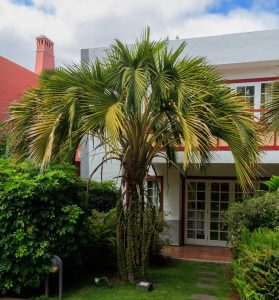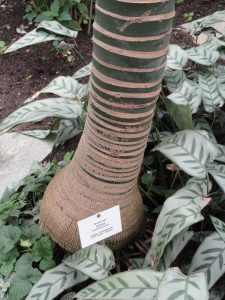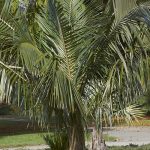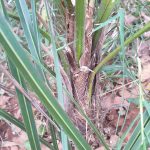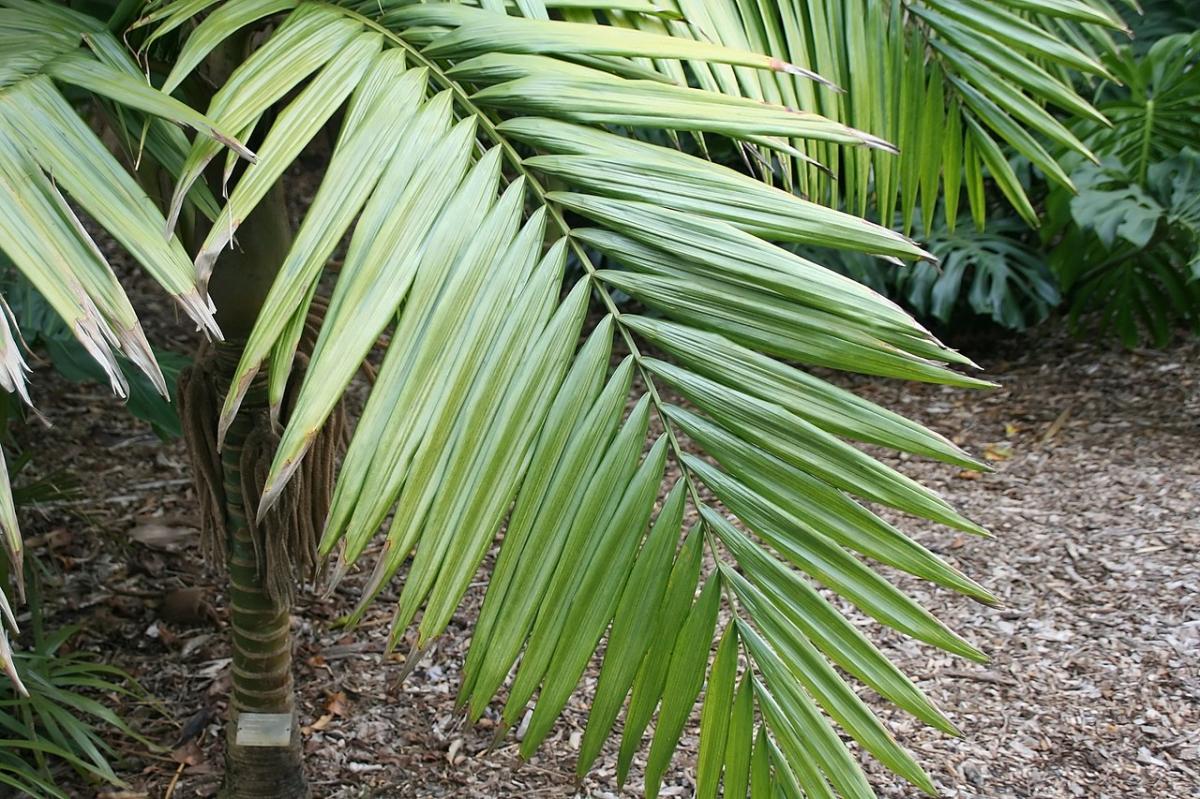
Image - Wikimedia / David J. Stang
There are many types of palm trees, in fact there are an estimated 3000 different species found mainly in the tropical, subtropical and warm regions of the world. All of them have a unique beauty, although at first it is normal that they all seem the same to us since there are certain characteristics that are common in them, such as the trunk and its bearing.
However, it is also very common that, as you get to know them more, you stop for a moment to observe them better. Over time, you learn to identify them just by looking at them, and those details that previously seemed to you to be the same in all of them, now are not. Thus, I invite you to know the names of some exotic palm trees, which you can easily get in specialized nurseries.
Beccariophoenix alfredii
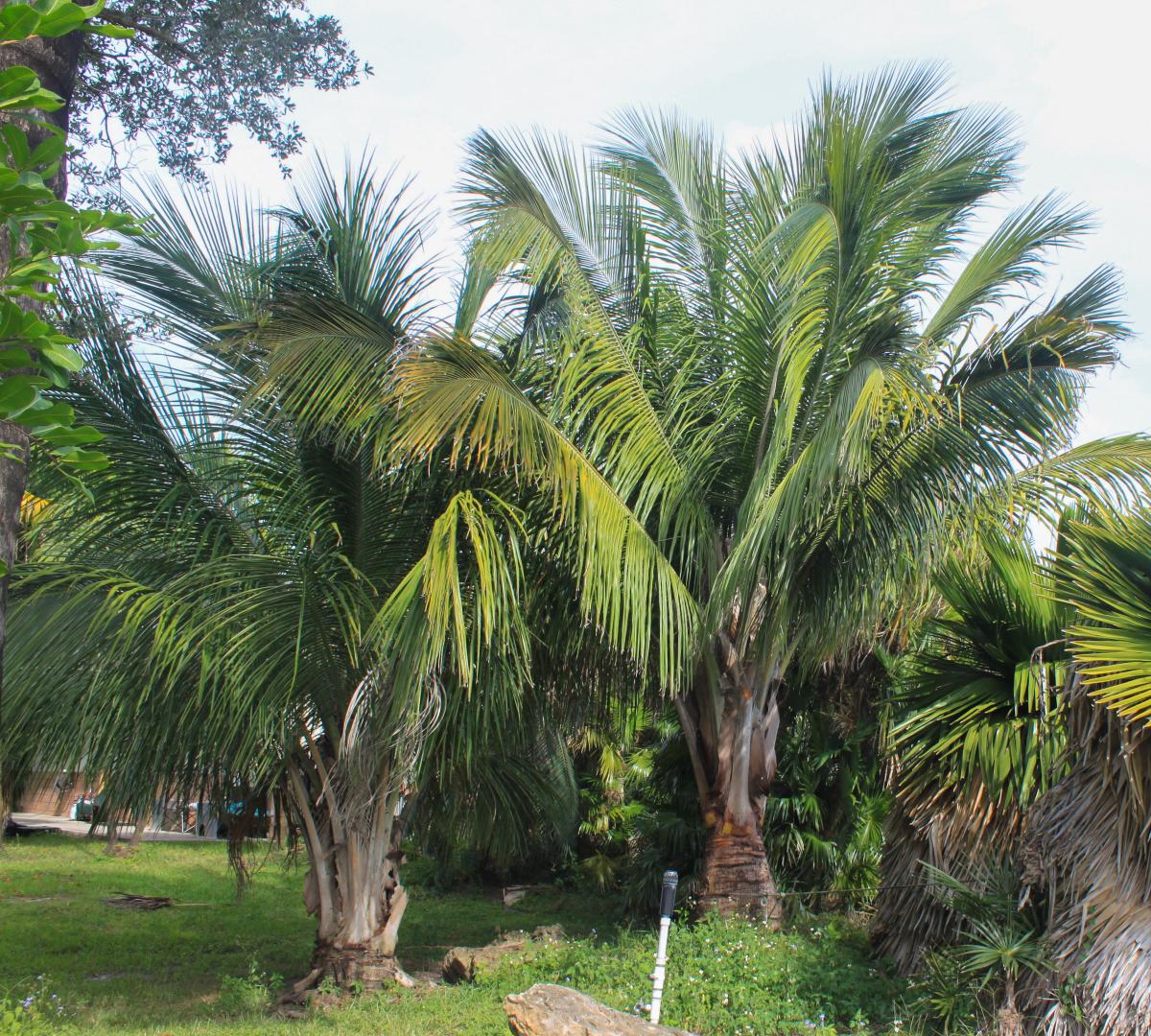
Image - Wikimedia / Zeeth14
La Beccariophoenix alfredii, known as the high plateau palm, is an endemic species to Madagascar, where it is threatened. Reaches a height of 10 to 15 meters, and its trunk thickens about 30 centimeters. The leaves are pinnate, green and long, up to 5 meters. She is related to him Cocos nucifera (coconut tree), but it is much more resistant to cold.
Care
It is a palm tree that must be in the sun, or at least in semi-shade. The earth must be rich in organic matter, without a tendency to puddle, and light. Resists up to -3ºC.
Bismarckia nobilis
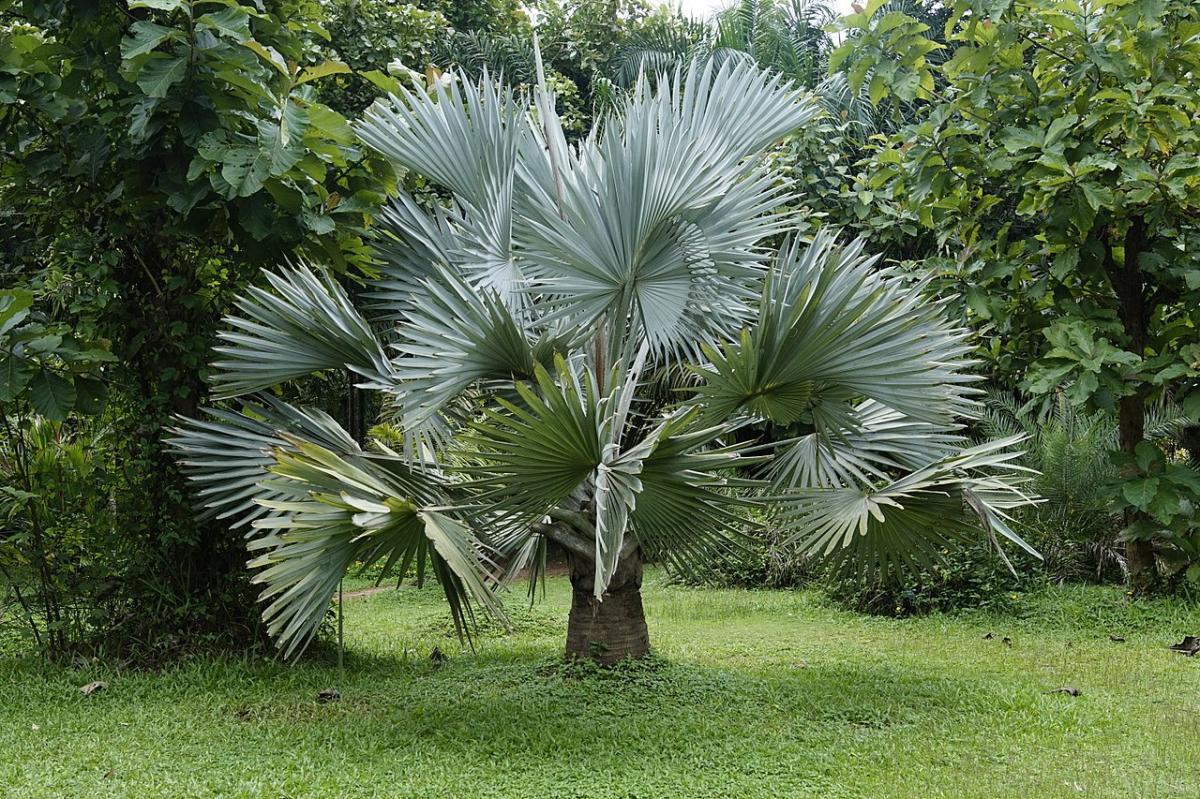
Image - Wikimedia / Vengolis
La Bismarckia nobilis It is a majestic palm that we find in Madagascar. It can reach a maximum height of 25 meters, although the most normal thing is that it does not exceed 12 meters. This is thick, around 45 centimeters in diameter, and is crowned by fan-shaped leaves of silver or green color (in the Mayotte variety) which are 7 meters wide by 6 meters high.
Care
Its growth rate is quite slow, but it is a plant that will grow just as well whether it is in full sun or in semi-shade. Although yes, it is important that the soil is fertile and that the water drains well, since it does not tolerate flooding. Resists up to -3ºC. Some English websites indicate down to -5ºC, but only if it is very, very specific frosts and the specimen is adult and acclimatized.
Burretiokentia hapala
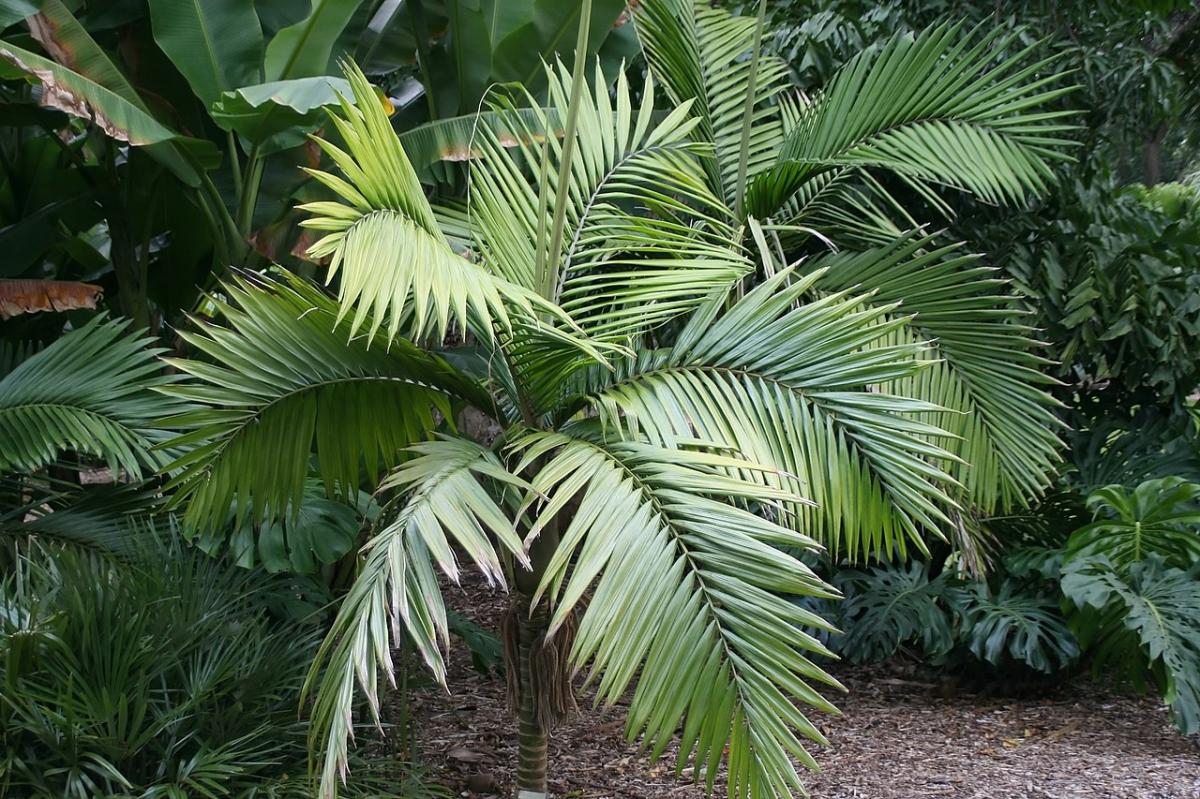
Image - Wikimedia / David J. Stang
La Burretiokentia hapala It is a palm that grows in New Caledonia. It has a single trunk up to 15 meters high by about 10 centimeters thick, the base being somewhat wider. Its leaves are pinnate, green, and up to 1 meter long. Its flowers are grouped in inflorescences that appear between the leaves, and are pale brown in color. The fruits are ovoid in shape, and are 16 millimeters long by 9 millimeters in diameter.
Care
It is a palm tree that needs shade, as well as soil rich in nutrients that drains water well. Outdoors it is very interesting in areas where there may be frosts but only down to -3ºC., and always on time.
Howea belmoreana
- Image - Wikimedia / H. Zell
You may know his sister Kentia (Howea forsteriana), but the Howea belmoreana it has a unique beauty. It is also endemic to Lord Howe Island in Australia. It grows to a height of 8 meters, with a trunk up to 16 centimeters thick. Its leaves are pinnate and are 3 meters long. The inflorescences are up to 1 meter long, and sprout just below the leaves. As for the fruits, they are globose, yellow-green and measure 3 centimeters.
Care
The same as those needed by kentia, that is: youth shade, soil rich in nutrients, and moderate watering. It is able to withstand frosts down to -4ºC.
Parajubaea torallyi
- Image - Wikimedia / Hortiphoto
- Copies of my collection
- Copy of my collection
La Parajubaea torallyi It is a kind of palm tree that, as an adult, is quite reminiscent of the coconut tree, but it resists the cold much better. It is endemic to Bolivia, where it is unfortunately in danger of extinction due to loss of habitat. Reaches a height of up to 17 meters (or 14 meters, if it is the variety Parajubaea torallyi var torallyi), with a single trunk up to 40 centimeters in diameter. The leaves are pinnate, green in color, and its fruits, also called cocci, measure up to 10 centimeters in diameter.
Care
It is a plant that should be cultivated more. It grows in sunny places, with fertile soils and well drainage, and withstands drought well once established. What's more, resists frost down to -7ºC, and you only have to water it from time to time.
Phoenix reclines
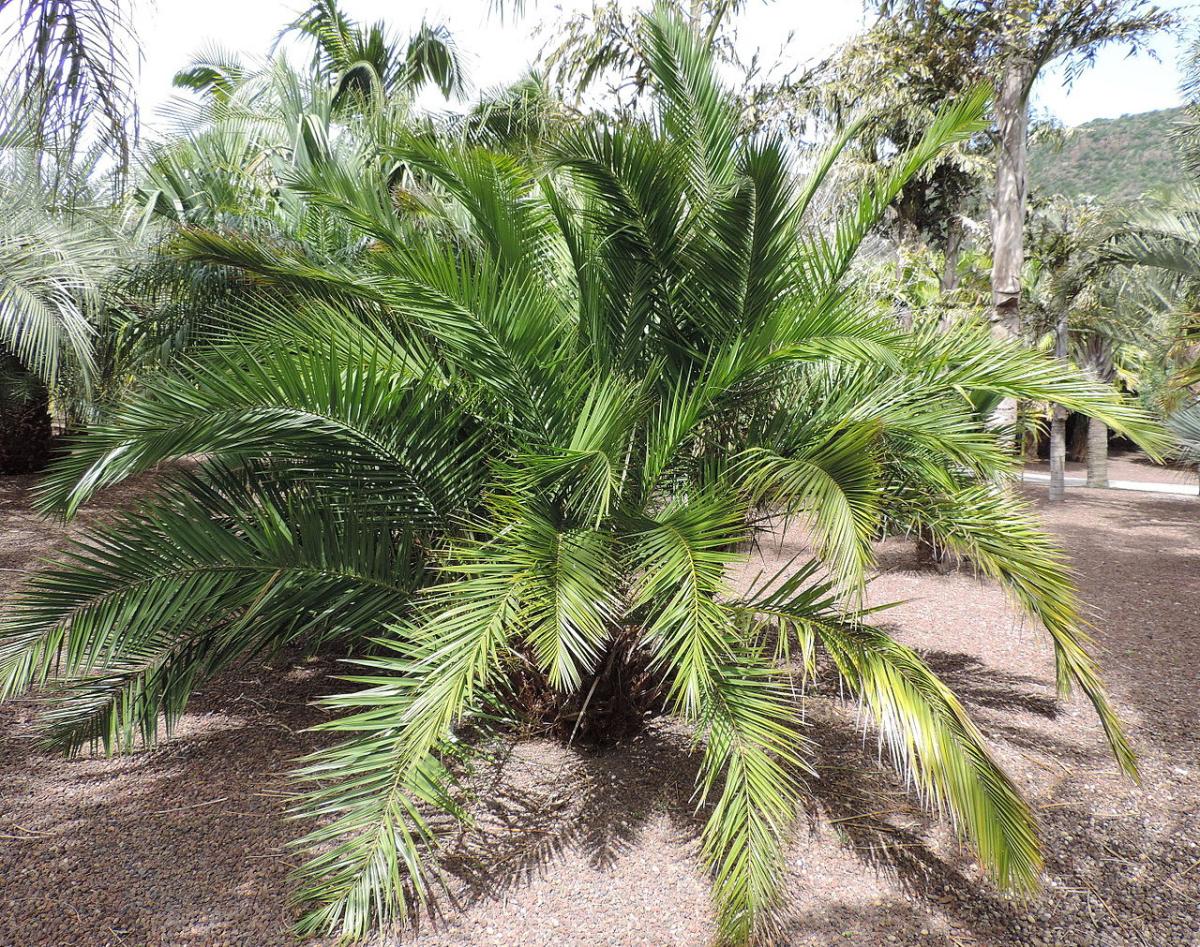
Image - Wikimedia / Krzysztof Ziarnek, Kenraiz
La Phoenix reclines It is a species known as the Senegal palm tree. It grows in Africa, Madagascar, Arabia and in the Comoros Islands. It is a plant that develops multiple trunks up to 15 meters high by only 30 centimeters wide. Its leaves are pinnate and green, with a maximum length of up to 4,5 meters. Like all Phoenixes, it has sharp spines at the base of each leaf. The flowers are grouped in inflorescences that appear between its foliage, and are yellowish. The fruit is a kind of date, that is, a globose drupe of about 2,5 centimeters that can be eaten without problems.
Care
It has a certain resemblance to Phoenix dactylifera, although if you allow me to say so, the P. reclinata it is more elegant. The care is the same: direct sun, soils that do not puddle, and moderate watering. It resists drought well, as well as frosts down to -4ºC.
ravenea glauca
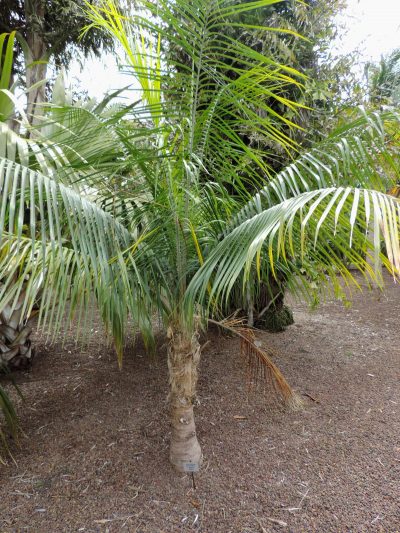
Image - Wikimedia / Krzysztof Ziarnek, Kenraiz
La ravenea glauca it is a palm endemic to Madagascar. Grows to a height of 9-10 meters, and has a trunk with a diameter of about 15 centimeters. It develops about 20 glaucous green pinnate leaves whose length is approximately 2 meters.
Care
Unlike his sister Ravenea rivularis, R. glauca It is much more resistant to dry periods (NOT to droughts), and to direct sun. For this reason, it is an ideal species for areas such as the Mediterranean region, since it also resists up to -3ºC.
Syagrus coronata

Image - Wikimedia / David J. Stang
El Syagrus coronata It is a species that has nothing to envy Syagrus romanzoffiana (feathery coconut). He is originally from Brazil, and develops a solitary trunk between 3 and 12 meters high. Its leaves are pinnate, arched, and covered by a kind of whitish powder or wax. The flowers are grouped in inflorescences that arise between the leaves, and are yellow. As for the fruits, they are 2,5 centimeters wide, and as a curiosity you should know that they are the favorite food of the macaws.
Care
It is a splendid palm tree, fast growing if it is watered frequently (especially in summer), and it responds very well to periodic subscribers. It resists the cold without problems, as well as the frosts of up to -3ºC.
Which of these exotic palm trees did you like the most?
